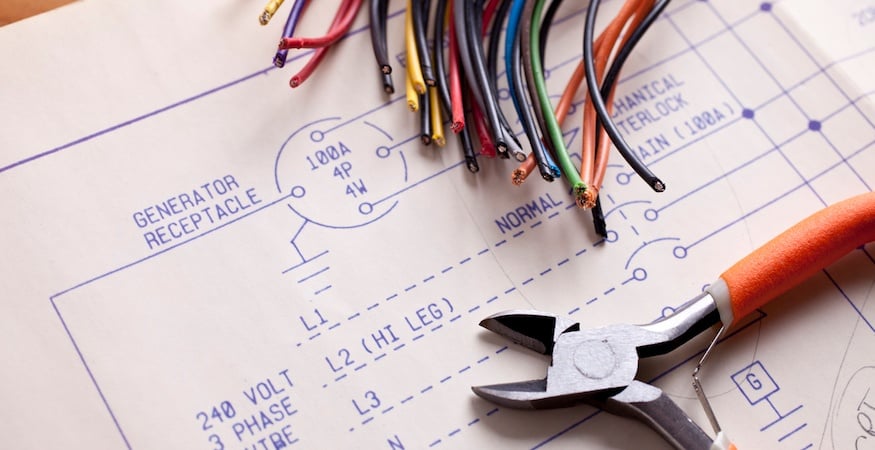At a small or mid-size OEM, it’s not uncommon for employees to wear many hats and stretch their capabilities across departments. This type of “everyone pitches in” culture can be a great asset to an organization. It also can be a detriment if the tasks that need to be conquered are beyond an employee’s expertise or skill set, no matter how enthusiastic the effort.
Take electrical assemblies, for example. The engineering requirements, regulations and tolerances required vary considerably, and mechanical engineers without proper training often lack the experience or expertise to accurately design them, leading to costly mistakes.
Here are five reasons having a qualified electrical engineer is critical in producing a successful assembly for your application.
1. Producing Design Drawings and Specs
There’s no better way to delay a project than to go “back to the drawing board.” Creating an electrical drawing package that contains schematics, harness layouts, service documentation and more is a complex process. Failing to provide thorough and accurate assembly drawings to a manufacturer will result in costly errors and delays.
Like all areas of technology, electrical engineering is continually evolving. The need for continued education and training is necessary to keep up with advances in the electrical assembly industry. Unless your engineers are staying on top of current trends, regulations and innovations, you’ll have a hard time designing a product that meets current standards.
2. Identifying COTS Parts
An engineer can spend extensive time and resources attempting to design a custom electrical assembly, only to later discover that a commercial off-the-shelf (COTS) part could have served the same function and performed as well (or better). An experienced electrical engineer is familiar with the industry and can identify when and which COTS parts can be used in an application.
3. Building the Assembly
As is true for mechanical engineering, what looks good on paper or a computer screen may not actually work in real life. For electrical assemblies, factors such as splice locations, connectors, gauge, types of wire, insulation, and material flexibility all play a role in whether a final product will perform as desired.
Conducting a Design for Assembly (DfA) review can help determine if a part will work as intended once it’s built. As part of the process, an electrical assembly design team can work with a manufacturer to build a prototype and immediately identify problem areas.
4. Determining the Complexity
Are your engineers familiar with regulatory requirements, such as UL, CSA, and CE and how to comply? Are there environmental factors that need to be considered that might impact performance? Does your project require highly complex wiring?
Abrasion, vibration, extreme heat, and fluctuations in temperature can compromise the integrity of an assembly. Routing wires too close to an engine’s high temperature exhaust aftertreatment system, for example, can result in critical failure. The routing, breakout locations and number and type of interconnects can affect performance and reliability. These factors all add to the complexity and cost of a design and play a role in whether an electrical assembly will actually work once it is built.
5. Performing a Failure Modes and Effects Analysis (FMEA)
When your project is intended for critical use application, such as heavy duty vehicles, avionics, and medical applications, failure is not an option. The scientific method of FMEA can identify potential failures in a design along with potential consequences. This defined process identifies problem areas and allows engineers to proactively address issues before production begins. Working with electrical engineers that implement FMEA practices can help identify potential failures to eliminate reworks, save considerable time and, most importantly, potentially save lives.
There are many differences between the skill sets of electrical and mechanical engineers, and it’s important to leverage the expertise of each. Work with an ISO certified supplier that can combine the proficiencies of your engineers and technicians with theirs during the design and development phases to provide the best outcome possible.
The experts at MCL are eager to collaborate with you to meet your electrical assembly needs. Reach out to us today for a consultation and to learn more.





